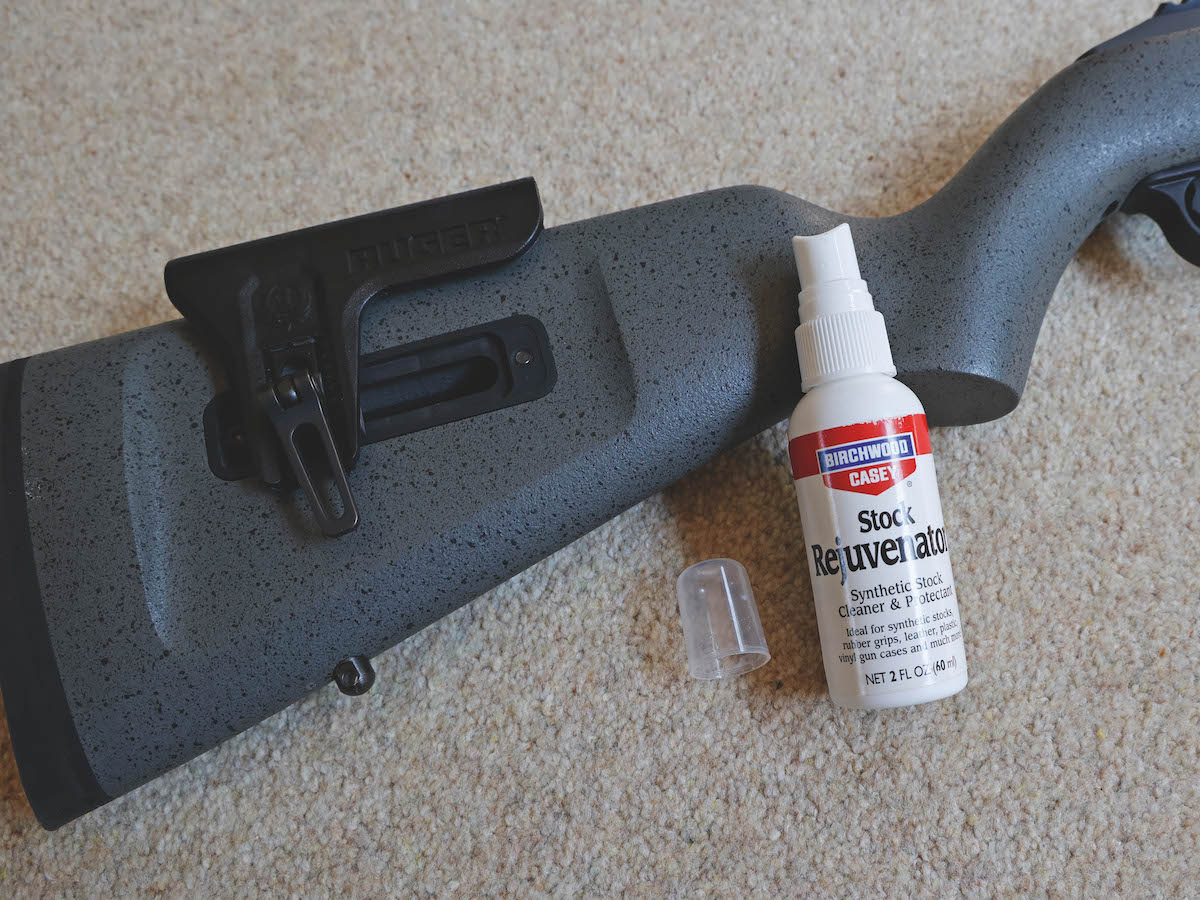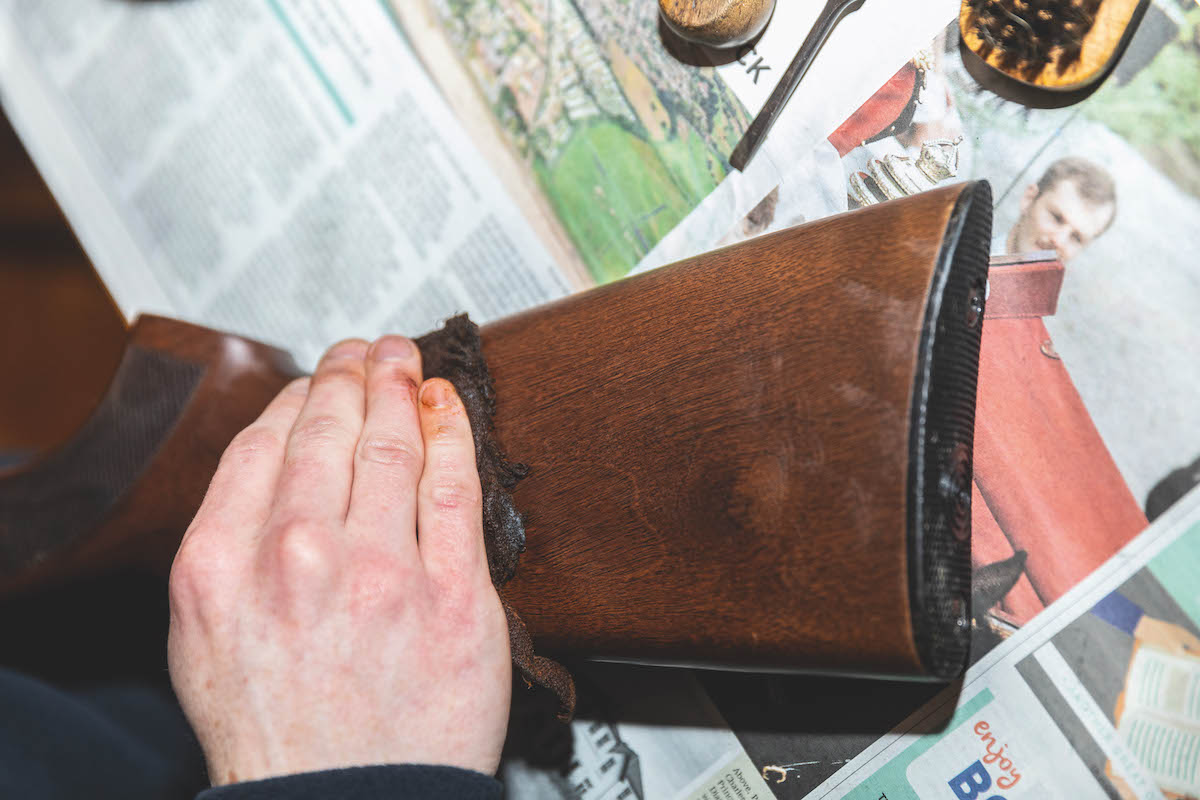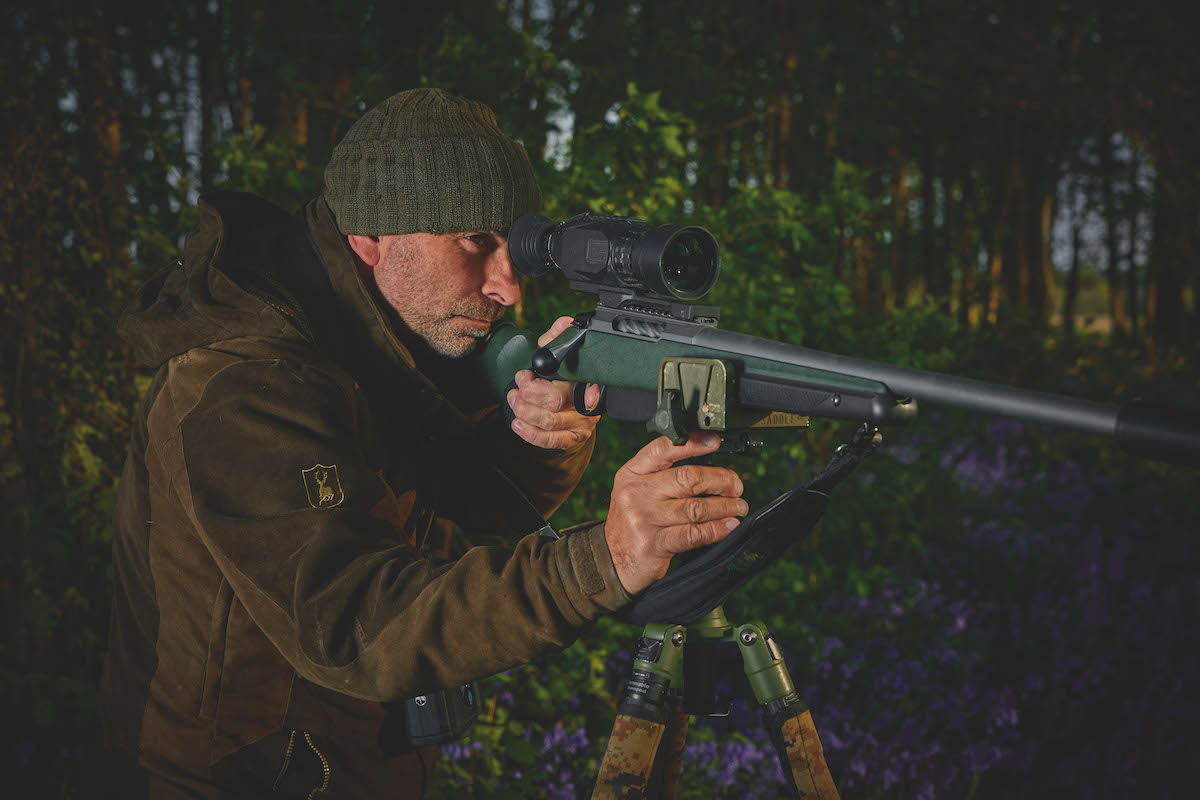Do airgun barrels really need cleaning?
Phill Price addresses the issue of whether airgun barrels really need to be cleaned and if so, what’s the right way to do it?
This subject is like so many others in our airgun world, in that it gets confused with the world of shotguns and firearms. Powder-burning guns absolutely do need their barrels cleaned, but with airgun barrels the answer is not so clear.
There are experienced folks who clean their airgun barrels with total discipline and regularity as though they were brushing their teeth, while others never clean their airgun barrels – and I do mean never! They own 30-year-old rifles that have never seen a mop, brush or a wad in all their lives. As with many things in life, I think the best answer for our needs lies somewhere between the two extremes.
So why do firearms need so much cleaning? First off, they burn propellant powder that can leave a residue behind which can clog the rifling. Secondly, most rifle bullets have copper or nickel alloy jackets that are forced through the barrel at immense speed under vast pressure, leaving smears of metal on the bore, which are very tough to remove.
A softer touch
Because of this, harsh cleaning chemicals are used in conjunction with phosphor/bronze brushes to scrub the contamination away. If you don’t clean correctly, this can build up layer after layer until accuracy is destroyed. The steel used in firearms barrel manufacture is hard in order to withstand the pressure and friction, so can accept the hard scrubbing of the cleaning process.
By contrast, our pellets are made from soft lead alloy, pushed by only a modest amount of pressure, so the deposition of contamination is only a tiny fraction of that found in firearms. Because of this, the steel alloys that are used to make our barrels need be far less hard to be ideal for the job in hand. If we were to use the harsh firearm cleaners, they could very well damage the O-rings and seals that all airguns rely on, so please be warned.

Please DO NOT use firearms cleaning products on your airgun, as they may well do harm
If we accept that any pellet passing through the rifling in our barrel’s bore will leave behind some lead deposit, then we need to ask how much is enough, how much is good and when does it become a problem? These are questions I’ve wrestled with forever, and over the years I’ve asked everybody whose opinion I valued for their point of view on the subject. Unsurprisingly, the answers were very mixed, yet I feel that sharing them might interest you so that you can see if you can benefit from the views.
A number of industry experts have told me that we should just leave our airgun barrels alone. When I pressed them as to why, there were two main threads of information. Some said that our airgun barrels naturally find equilibrium and are best left undisturbed, but I think that this only happens properly when we use just one pellet type all the time. Swapping from one pellet lead alloy to another can cause conflict, which in turn can affect accuracy.
The second, more worrying, reason, is that people damage barrels with ill-advised or flat-out stupid cleaning techniques.
As mentioned earlier, the steel alloy most airgun barrels are made from is not very hard because it doesn’t need to be, so if you force a hard steel rod through you can scrape, gouge or wear the lands of the rifling. Any damage here is sure to negatively affect accuracy and is without doubt irreparable. I remember when I worked in a gun shop, customers would often force a steel coat hanger through to clear out a stuck pellet. They may well have cleared the blockage, but ruined their barrel in the process.
Solving the problem
Of course, people will try to blame the manufacturer for the inaccuracy, when in fact it is the customers that have specifically caused the damage themselves, which explains why the makers say to leave the barrel alone.
Other manufacturers say that carefully done, cleaning using the correct procedures will cause no harm and might well keep accuracy top-notch. So why should that be? Here I’ll offer the opinion of one of our industry’s elder statesmen, who is a kind of Yoda-like character. “Not cleaning your barrel you are: sorry you’ll be.” OK, perhaps he wasn’t quite that blunt, but he was clear that barrel cleaning, with the right lubricant, was absolutely your friend.
His logic goes something like this. When you’re shooting nice, tight groups on the target range you will sometimes get a flyer, one pellet that goes astray. We often blame a poorly made pellet, but my friend suggests another cause.
He asked me to visualise this scenario. He said to imagine the inside of the bore being smooth and consistent, but what if there was a small imperfection on it, perhaps a tiny lump of metal?
Each passing pellet would be nicked, leaving a sliver of lead behind, and eventually it would become big enough until it broke away, totally ruining the shot that dislodged it. I don’t know if that theory is right, but it certainly seems possible to me. If the barrel had been cleaned, the sliver would have been removed.
For most of my shooting career I’ve simply left my barrels alone and not seen any reason to change that view. If I’ve been testing new pellets, I would diligently clean airgun barrels to ensure that no outside influence affects my test results, but if a rifle was living on a steady diet of just one pellet, I would leave it in peace.
However, my view on this was changed when I became a regular user of a high-power airgun.
My Daystate Huntsman Regal XL launches Air Arms .22 Diabolo pellets at around 880 ft/sec. Now and then I would see the usual accuracy dip, and the manufacturer recommended a modest clean. A few minutes of easy work saw the groups tighten right back up, so for that gun at least I know cleaning is necessary. Because of this, I clean the barrel any time I’m checking zero or having a little bit of practice. As it’s a hunting gun, it doesn’t fire that many pellets in reality, but a sensible cleaning regimen still makes sense if I want the very finest accuracy.
The magic tricks
With that said, you may well be asking, “How do you clean your barrels then, Phill?” The answer is felt wads pulled from breech to muzzle. There are many felt wads out there, and I’ve never found one that didn’t work – so far.

Cleaning wads come in all sizes and from many manufacturers
In essence, they’re just as they sound. The old VFG Discofelt ones were advertised as being used by firing them through the barrel with a pellet in the bore behind them. If you pressed me, I’d have to say I have no idea if this worked or not. I prefer to pull them through with a rod or a cable, slowly and carefully. In that way I feel the friction of the wad. As they’re screwed onto the tapered male thread, I can go on further for a tighter fit in the bore, or less for a loose one. I like to think I can judge the right amount of pressure to ensure the wad is right out into the grooves for best cleaning.
In a break-barrel this is easy. Simply unscrew the silencer if you use one, and then feed the rod or cable from muzzle to breech. Attach the wad and pull it through. My way is to add a cleaning solution to the first and second wads, and then to pull fresh wads through until they come out clean and white.

The first wad through is usually quite dirty, while the last one should come out pure white

Phill likes to remove the silencer before starting cleaning
With a pre-charged pneumatic, it’s a little more tricky. Start the same way, by removing the silencer and then feeding the rod in from the muzzle until it appears in the loading area in the block. Next, screw the wad onto the thread, add the oil and then pull through. It’s fiddly, but well worth the effort. I find having the rifle in a solid support like a cradle really helps to hold the rifle steady and safe while your hands are otherwise occupied.

Phill finds a gun cradle very useful for barrel-cleaning duties

Screwing the wad onto the rod is fiddly, so a little patience is needed
So, what is this magic cleaning fluid that ‘Yoda’ shared with me? Three-in-one oil! Yup, you read it right folks. Actually, what he really said was three-in-one, but that any simple, light oil would do the trick – but almost all of us have a small can of three-in-one somewhere, so there’s no need to buy anything new. It’s all I’ve used for years now and I have no complaints. I can’t tell you what a smile it gave me to know that something cheap that we all own is just the job for our needs. As the tin reads ‘lubricates, cleans and prevents rust’, which is a list of all the qualities we need. Perfect!

Phill was delighted to learn that something as simple as this was exactly what he needed
Oil or not?
I think the oil helps the lead residue to come free from the airgun barrel, and carries it into the wad as a solution. If I thought a barrel was really filthy, I might run two oiled wads through and then some dry ones, followed by a few more oiled and then dry ones until they were coming out clean.
A closely related subject is lubricating pellets. An old pal of mine, a designer for one of the big brands, always swore by lubricating pellets with beeswax furniture polish. He claimed that it made them more consistent and reduced lead build-up in the bore, so I used that practice for years. However, in recent times I’ve mostly used JSB-manufactured pellets. There’s a rumour that the lube JSB uses in its moulding process is all you need, and I can’t disagree.
If you fancy trying some lube on your pellets, Napier of London has offered the Power Pellet Lube for years and I’ve heard many an airgunner swear by it, so it might be worth a look. Cleaning and lubricating pellets is too long a subject to cover here, so I’ll save it for another day.

Lubricating your pellets may reduce the need for barrel cleaning
So what do you make of all the information I’ve shared? If you’re happy with your gun’s accuracy and stick to one pellet type all the time, perhaps you should leave your barrel alone. However, if you’re not happy or are testing new pellet types, then cleaning should be on your agenda. You can buy a rod and a threaded screw that holds the wads, or one of the excellent little VFG pull-through kits for not much money at all. Please note, both the rods and pull-through cables have plastic coatings to protect your bore.
I don’t think we need to be scrubbing and polishing our barrels every day, but a sensible regimen of care shows respect for our fine guns by protecting them and will maximise their performance for almost no money at all.








